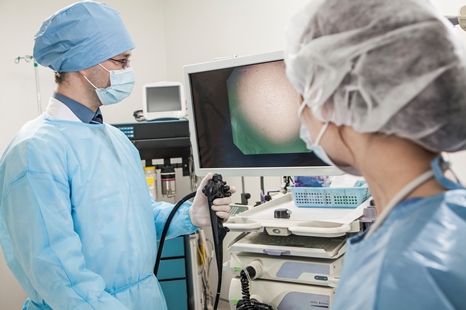The use of artificial intelligence (AI) is predicted to revolutionize the health care IT industry in 2019. Facilitated by improved data storage in the “cloud” and the vast amounts of data generated by the Internet of Things, AI allows health care providers to sort through a treasure trove of data far more quickly than was previously thought possible. This can allow health care providers to detect conditions that require treatment far sooner, and even to predict which specific patients may be most at risk of certain diseases. Wearable devices can allow doctors to monitor their patients remotely; the use of AI can allow for constant monitoring and detection of changes that a human may have missed. The communication of information that may indicate disease can happen in real time. Because of this huge potential, the market for AI healthcare IT applications is expected to be worth more than $1.7 billion by the end of 2019.

First, what is “Artificial Intelligence”? While there are many different definitions of AI in use, the term basically refers to a computer or machine doing anything that resembles “thinking” similar to a human – that is, engaging in tasks such as learning or solving problems. The recent breakthroughs in AI were based on incredible breakthroughs in a related field, machine learning. Machine learning means that computers are “trained” by performing tasks over and over and over again, rather than by a human being entering a program. One of the best-known examples is Google Translate becoming incredibly more useful and accurate, basically overnight. Similarly, Google’s game-playing AI program AlphaZero was able to beat the world’s best chess-playing computer program after teaching itself how to play chess in less than four hours.
With the ability to sift through and analyze vast stores of information, the possibilities for AI healthcare IT seem almost limitless. AI can assist with making hospital workflows more efficient, with capabilities like voice-to-text transcription reducing the time required for entering data into patient records. The technology can also help with clinical decision support, by integrating electronic health records with other data like medical images. Harvard Business Review recently identified ten of the most promising AI applications for health care, including: robot-assisted surgery, virtual nursing assistants, administrative workflow, fraud detection, dosage error reduction, connected machines, clinical trial participation, preliminary diagnosis, automated image diagnosis, and cybersecurity. Some of the most exciting developments, however, will be in the field of medical imaging.
Computer-aided detection/diagnosis (CAD) systems have been available to radiologists for decades, so they are already familiar with the general idea. Publications about using AI in radiology have been increasing exponentially, however. Recent studies and demonstrations show that AI has tremendous potential for tasks such as classifying liver masses and assessing the risk of malignancy for a lung nodule. For radiology residents, the more images they see, the better they get. If a computer can teach itself chess in less than four hours by using AI and machine learning, imagine the advances that can be made by computers that have access to huge numbers of medical images and vast amounts of data. Just like a human health care provider, AI algorithms learn to identify patterns in medical images after being “trained” using large numbers of examinations and images. AI simply has the processing power to pore through far more information than a person ever could.
This does not mean that AI or machines will replace your health care provider, however. AI may simply help a provider detect something that they may have otherwise missed, or help explain the probability that a particular piece of data indicates a larger problem. A machine does not have the skills or empathy to deliver a diagnosis or explain treatment options. Hence, the best health care providers of the future will be those who learn to utilize the promise and capabilities of AI most effectively.
Because of the tremendous potential for the partnership between AI and health care providers, Forbes recently issued an article listing top 8 predictions for health care this year. One of its top predictions is that AI will begin to show impressive results across both clinical and non-clinical uses, leading to growth in AI healthcare IT that will cross $1.7 billion before the end of the year. Similarly, Accenture reports that the AI healthcare IT market is “exploding,” with growth in this market expected to reach $6.6 billion by 2021. Unbelievably, they expect this market to grow more than ten times its current size in just the next five years.
The evolution of human and machine interaction is expected to lead to exciting developments in risk analytics and drug discovery, in addition to imaging diagnostics. Use of AI is not, of course, a magical panacea that guarantees success. IBM’s Watson computer dazzled the audience on Jeopardy! in 2011, when its natural-language processing abilities led it to victory. Two years later, IBM announced that Watson would enter the healthcare field, reviewing all of the medical literature on cancer and advising doctors on treatment plans. A recent round of layoffs at the Watson Health division, however, has led some to question whether IBM had a clear vision and roadmap for the company. This shows that blind use of technology with AI is not enough; you still need to find the right technology that is available at an affordable price and targeted to meet customer’s needs. The pace of change can, of course, seem bewildering and it can be challenging to keep up and adapt. Contact an experienced AI healthcare IT provider like sepStream EMR/RIS/PACS to explore how AI can improve the quality of your diagnostic imaging, increase productivity and reduce costs. Click here for more information.